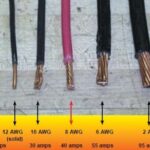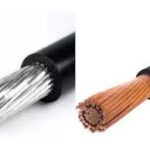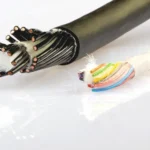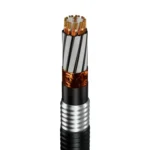Choosing the right speaker wire gauge is one of the simplest — yet most important — ways to ensure clear, distortion-free sound from your audio system.
Whether you’re setting up a home theater, car stereo, or professional sound system, the gauge (thickness) of the wire determines how efficiently power travels from the amplifier to your speakers.
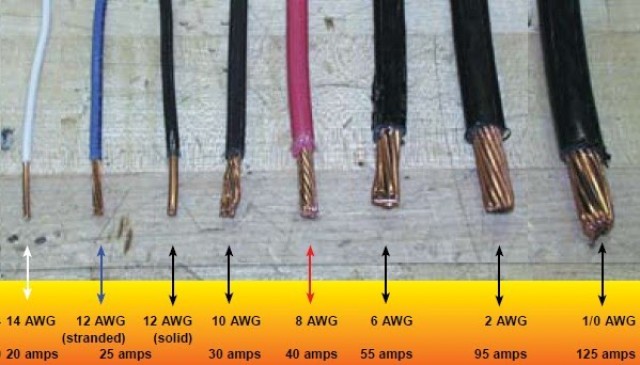
Speaker wire gauge recommendations
This guide explains how to choose the right wire gauge based on distance, power, and impedance, and includes practical recommendations and a quick-reference chart.
What Is Speaker Wire Gauge?
The American Wire Gauge (AWG) system measures the thickness of electrical wire:
Lower numbers = thicker wire (can handle more current).
Higher numbers = thinner wire (for lower power or shorter runs).
For example:
12 AWG wire is thicker and carries more current than 16 AWG wire.
Thicker wires reduce resistance, improving sound clarity and efficiency.
Why Wire Gauge Matters
Every foot of speaker wire adds electrical resistance, which weakens the audio signal.
Too much resistance can cause:
Loss of sound detail
Reduced volume
Uneven frequency response
Choosing the right gauge ensures the amplifier’s full power reaches your speakers — especially over long distances.
Speaker Wire Gauge Recommendations by Distance and Impedance
| Speaker Impedance (Ohms) | Distance (ft / m) | Recommended Gauge (AWG) |
|---|---|---|
| 4 Ohms | 0–25 ft (0–7.5 m) | 16 AWG |
| 4 Ohms | 25–50 ft (7.5–15 m) | 14 AWG |
| 4 Ohms | 50–100 ft (15–30 m) | 12 AWG |
| 8 Ohms | 0–25 ft (0–7.5 m) | 18 AWG |
| 8 Ohms | 25–50 ft (7.5–15 m) | 16 AWG |
| 8 Ohms | 50–100 ft (15–30 m) | 14 AWG |
👉 Quick tip: For most home audio setups, 16 AWG speaker wire is sufficient.
For high-power or long-run installations, use 14 AWG or 12 AWG for better performance.
Best Wire Gauge by Application
| Application | Recommended Gauge | Notes |
|---|---|---|
| Home theater | 16 AWG | Standard use up to 50 ft |
| Car audio | 14 AWG | Handles vibration and power draw |
| Professional PA systems | 12 AWG | For long runs and high output |
| In-wall speaker wiring | 14 AWG CL2/CL3 rated | Meets building code safety |
| Compact bookshelf speakers | 18 AWG | Short runs, low power |
| Subwoofers | 12 AWG | Minimizes voltage drop on bass-heavy signals |
Copper vs. Aluminum Speaker Wire
While both conduct electricity, copper speaker wire is the gold standard for audio quality:
Copper wire → Better conductivity and flexibility.
CCA (Copper-Clad Aluminum) → Cheaper, but higher resistance; suitable only for budget systems or short runs.
✅ Recommendation: Always use 100% pure copper wire (OFC) for premium sound quality.
Insulation Types and Ratings
Choose insulation based on the installation environment:
PVC (Polyvinyl Chloride): Standard and flexible.
CL2/CL3-rated: For in-wall or in-ceiling use (complies with building codes).
Outdoor-rated / UV-resistant: For external or marine speaker systems.
How to Identify the Right Speaker Wire
When shopping, look for:
Clearly marked polarity (+ / – or color stripe)
Oxygen-Free Copper (OFC) label
Gauge size printed along the jacket
UL or CE certification for safety and performance assurance
Summary: Choosing the Right Speaker Wire Gauge
| System Type | Distance | Recommended Gauge |
|---|---|---|
| Small speakers / short runs | <25 ft | 18–16 AWG |
| Home theater / general use | 25–50 ft | 16–14 AWG |
| Long runs / subwoofers | >50 ft | 14–12 AWG |
| Professional / outdoor | Any | 12 AWG pure copper |
Conclusion
The right speaker wire gauge ensures your system delivers clean, powerful, and balanced sound.
If your runs are long or your speakers demand high current, go thicker — it’s a small upgrade that makes a big difference.
👉 Looking for premium OFC speaker wire in 12, 14, or 16 AWG?
Contact TOT Wire & Cable today for high-quality, cost-effective speaker cables tailored for home, car, or professional audio systems.

